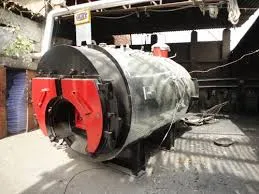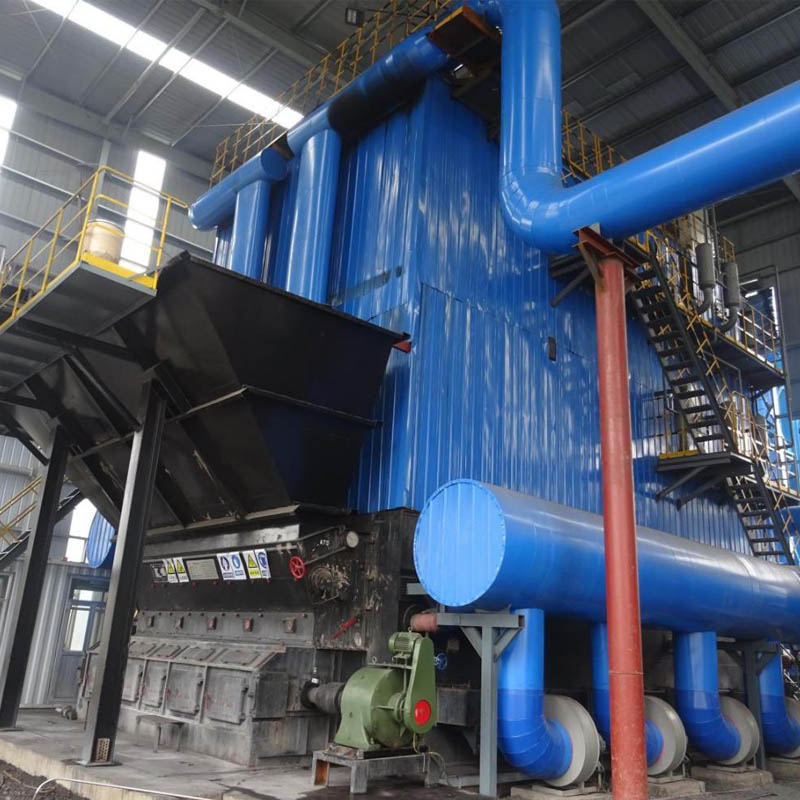
Fév . 06, 2025 02:31 Back to list
how steam boiler systems work
Steam boiler systems are integral to various industrial operations, from producing electricity to heating. Their efficiency and reliability make them a popular choice in manufacturing, food processing, and power plants. Understanding how these systems work involves exploring the components, the process of steam generation, and the nuances that ensure safe and efficient operation.
Water quality management is another aspect that cannot be overlooked. Impurities in water can lead to scale buildup inside the boiler, reducing efficiency and increasing the risk of failure. As a result, water treatment is a standard practice, involving filtrations, softening, and the removal of dissolved oxygen. Experts in steam boiler operations often work closely with water treatment specialists to develop comprehensive strategies that ensure the longevity and reliability of the system. Innovations in steam boiler technology continue to evolve, with modern systems incorporating features that enhance efficiency and sustainability. For example, the integration of economizers can recover waste heat from the flue gases, improving the overall thermal efficiency of the system. Additionally, the growing emphasis on reducing carbon emissions has led to the development of more advanced combustion systems and the exploration of alternative fuels like biomass and biofuel. Engineers and operators committed to sustainability frequently seek out these advancements to ensure that their systems meet environmental regulatory standards while maintaining cost-effectiveness. The integration of the Internet of Things (IoT) within steam boiler systems represents a further step towards optimizing operations. IoT devices enable real-time monitoring and data analysis, allowing operators to make informed decisions and quickly respond to any issues that arise. Through comprehensive data collection and analysis, it's possible to predict maintenance needs, thus minimizing downtime and extending the lifespan of the equipment. In conclusion, steam boiler systems are complex but indispensable elements of numerous industries. Their successful operation requires an intricate understanding of mechanical components, safety protocols, and efficiency measures. By combining technical expertise, rigorous safety standards, and continuing advancements in technology, operators can maximize the reliability and sustainability of these pivotal systems. In a world increasingly focused on efficiency and environmental responsibility, mastering the nuances of steam boiler systems is more important than ever for businesses aiming to remain competitive and conscientious.


Water quality management is another aspect that cannot be overlooked. Impurities in water can lead to scale buildup inside the boiler, reducing efficiency and increasing the risk of failure. As a result, water treatment is a standard practice, involving filtrations, softening, and the removal of dissolved oxygen. Experts in steam boiler operations often work closely with water treatment specialists to develop comprehensive strategies that ensure the longevity and reliability of the system. Innovations in steam boiler technology continue to evolve, with modern systems incorporating features that enhance efficiency and sustainability. For example, the integration of economizers can recover waste heat from the flue gases, improving the overall thermal efficiency of the system. Additionally, the growing emphasis on reducing carbon emissions has led to the development of more advanced combustion systems and the exploration of alternative fuels like biomass and biofuel. Engineers and operators committed to sustainability frequently seek out these advancements to ensure that their systems meet environmental regulatory standards while maintaining cost-effectiveness. The integration of the Internet of Things (IoT) within steam boiler systems represents a further step towards optimizing operations. IoT devices enable real-time monitoring and data analysis, allowing operators to make informed decisions and quickly respond to any issues that arise. Through comprehensive data collection and analysis, it's possible to predict maintenance needs, thus minimizing downtime and extending the lifespan of the equipment. In conclusion, steam boiler systems are complex but indispensable elements of numerous industries. Their successful operation requires an intricate understanding of mechanical components, safety protocols, and efficiency measures. By combining technical expertise, rigorous safety standards, and continuing advancements in technology, operators can maximize the reliability and sustainability of these pivotal systems. In a world increasingly focused on efficiency and environmental responsibility, mastering the nuances of steam boiler systems is more important than ever for businesses aiming to remain competitive and conscientious.
Share
Latest News
-
Best Steam Boiler Design PDF Free Design Calculation & Diagram Downloads
NewsJun.10,2025
-
Hot Boiler Water Heater Efficient Heating Solutions for Home & Commercial Use
NewsJun.10,2025
-
Steam Boiler Safety Devices High-Quality Protection Valves
NewsJun.10,2025
-
Ultimate Steam Boiler Checklist for Safety & Efficiency
NewsJun.10,2025
-
Optimal Hot Water Boiler Temperature Setting Guide
NewsJun.10,2025
-
Effective Hot Water Boiler Chemical Treatment Protect & Maintain
NewsJun.09,2025
Related PRODUCTS
Copyright © 2025 HEBEI HONGZE BOILER MANUFACTURING CO., LTD. All Rights Reserved. Sitemap | Privacy Policy






















